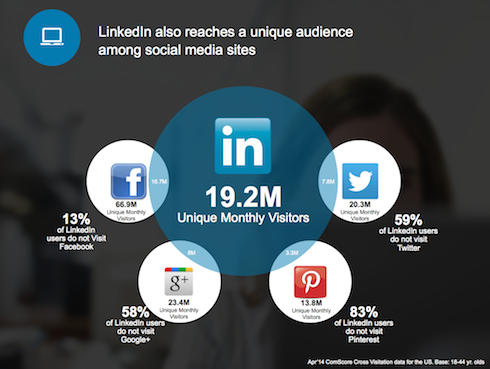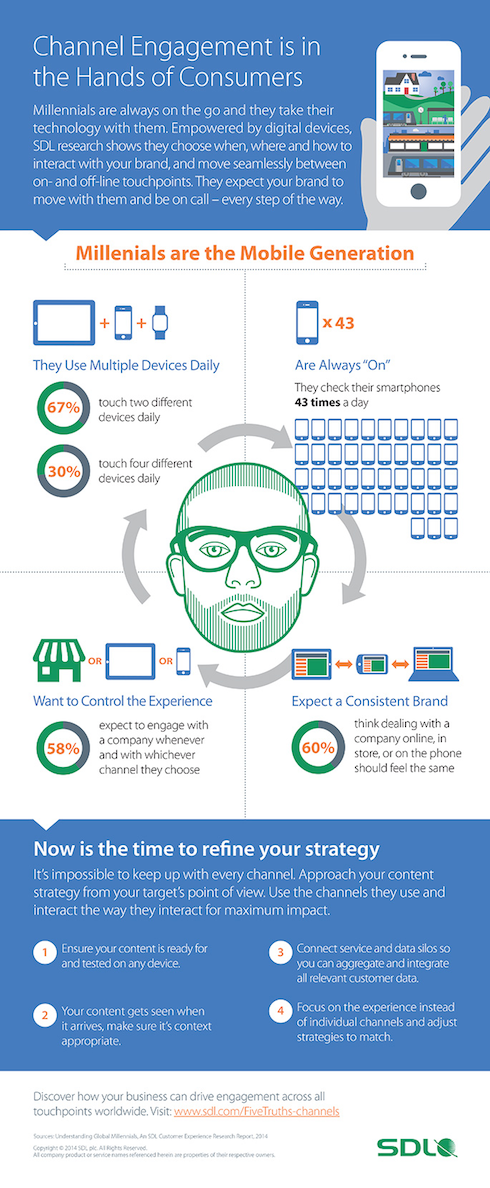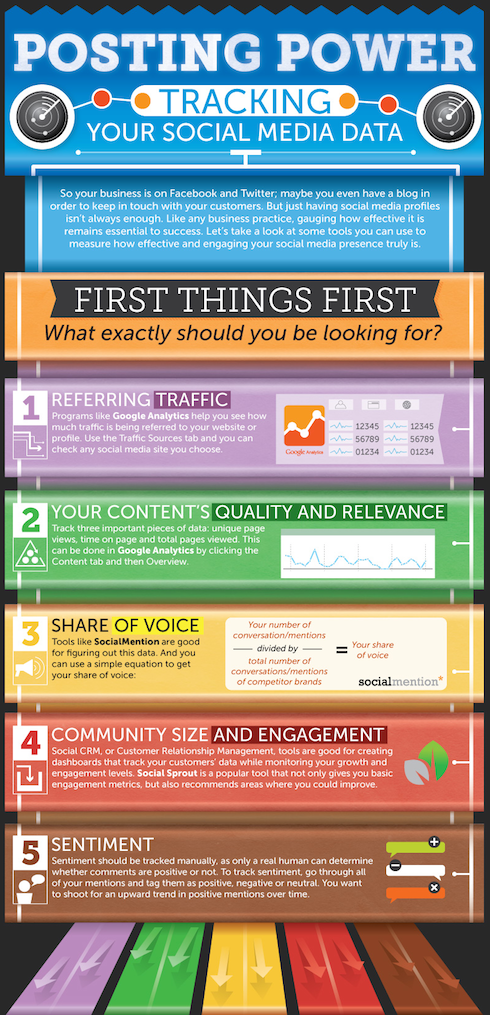By Liam Dowd - July 22nd, 2014
LinkedIn consumers, what to track across social media, Twitter updates and why millennial think channels are irrelevant.
LinkedIn members like to buy
New research from LinkedIn illustrates how powerful this social network can be not only for networking across your corporation, but also as a commercial tool. The highlights from the research include:
- LinkedIn members are brand advocates who are willing to pay more and have more buying power.
- 86% of those interviewed said: “When I find a brand I like, I stick with it.”
- 78% said: “I’m typically willing to pay more for high quality items.”
- According to comScore’s 2013 Buying Power Index, LinkedIn members have nearly twice as much buying power than Facebook.
Implication: LinkedIn provides a prime audience for high-consideration consumer products.
- Members are more than twice as likely to trust information provided on LinkedIn than other social networks, which drives purchases.
- 51% strongly agree that they trust the information from listed publishers on LinkedIn, compared with only 23% from the next highest social network
Implication: Leverage the trust on LinkedIn to build consumer brand awareness.
LinkedIn has been slowly evolving and has made some savvy changes to how it managed its member’s content. What is clear is that this social network is now a commercial space, as well as the premiere network for business professionals.
Twitter updates
Twitter has been busy over the last week updating how they present their analytical data, and also launching a new service that taps into the immediate nature of Twitter.
The analytical dashboard that Twitter now sports has a new layout and uses colour to illustrate how certain metrics have changed over time. It is now possible to instantly see changes to impressions and engagement rates. Also, this data can now be exported offering even more granular information your corporation can use to base its Twitter campaigns on.
Also, Twitter has announced Everyday Moments, which the network describes as: “Major events like the World Cup and Wimbledon provide fantastic ways for brands to connect with consumers on Twitter. However, once the trophies have been lifted, and the crowds have moved on, there are many other opportunities waiting. These are what we call Everyday Moments that marketers with an always-on approach to Twitter can tap into.
“To underscore the scale of how many chances there are for brands that take advantage of these Everyday Moments, consider this: the average consumer unlocks their mobile phone as many as 110 times a day (Locket App research, 2013).
“That’s a mind-boggling number, and understanding its implications has huge potential for marketers. It underscores how our mobile phones are actually gateways to content discovery. Perhaps most important, it indicates that how we are discovering this content is rapidly changing. For instance research by GfK earlier this year found huge growth in the numbers of people discovering original digital video via social media, up 70% between 2013 and 2014.
“That study neatly articulates how people are always on the lookout for new content. Crucially, this is not just content they enjoy on their own; if they like it, they are very likely to share it. Nielsen found that the top reason for those who have retweeted a brand did so because they liked the content.”
Pippa Glucklich, co-CEO, Starcom Mediavest Group told The Drum: "It’s amazing to think that we used to joke about Twitter as the place where you posted banal updates such has 'Hey guys – just going to get a burger!' Now, we’re talking about these everyday moments as a perfect way to tell a brand story – and this tool is a simple and quick way to identify them.
"That previous burger tweet could be turned into an opportunity for Burger King to flog a Whopper to that user with a targeted promoted tweet. If they continued the conversation after eating the Whopper with a tweet about how great it was, Burger King could target that user to encourage them to follow its account to hear about great future offers."
Marketers know that real time connections are become a vital component of every marketing campaign. Everyday Moments could offer a whole new facet to how conversations are initiated and maintained throughout a campaign’s lifecycle.
Channels are irrelevant
According to the latest research from SDL, 60% of millennials expect a consistent brand presence over all the channels they access. The data reveals that today’s consumers no longer care about where they are or what device they are on when interacting with a brand, as 58% of millennials polled said they expect to engage with a company whenever they choose and via whichever channel they elect. The data highlights the critical need for brands to stop focusing on channels and instead apply what they know about their consumers to elevate the overall experience in the buying journey.
“Consumers have drastically changed the way they engage and interact with companies, altering expectations and making it imperative for brands to quickly adapt,” said Paige O’Neill, chief marketing officer at SDL. “To keep pace, marketers should focus on the experiences customers want throughout the customer journey, and adjust company strategies to coincide. If you change the way you engage customers on one channel, it may only be one step in an overall strategy. It is vital for organizations to ensure channels are so connected that they become irrelevant, placing the focus on delivering true omnichannel engagement.”
The report concludes: “Consistency builds trust and nurtures brand loyalty. In a recent customer experience survey of some 27,000 American consumers, McKinsey & Company found that measuring satisfaction on customer journeys is 30% more predictive of overall customer satisfaction than measuring happiness for each individual interaction. These days, a consistent customer experience can be a key differentiator for your brand. It reinforces your identity, and in a marketplace that’s chock-full of distractions, it keeps your audience focused on the most important message of all – yours.”
For brand owners the channel is no longer the message, as connections can be manifold. Corporations that want to reach the lucrative millennial group need to ensure they have a presence on every touchpoint.
Social tracking
With news that Twitter has overhauled their analytical services, now is a good time for your corporation to assess exactly what elements of social media your enterprise is tracking. With masses of data available, as the analytical engines have matured, seeing meaningful data can be difficult to define.
A new infographic from Info Graphic World offers checklist to help your business understand what can and ought to be tracked across the social media space.
Social media insights
As social media continues to expand and diversify, understanding how this space is divided delivers data that all corporate marketers need to understand. Digital Insights have looked at the current state of social media and put together a handy infographic summary. Some of the highlights include:
- 75% of the engagement on a Facebook post happens in the first 5 hours.
- 23% of teens consider Instagram as their favourite social network.
- More than two users sign up for LinkedIn every second.
- 53% of interaction between Google+ user and a brand is positive.
- 44% of users on Twitter have never sent a tweet.
- 84% of women and 50% of men stay active on Pinterest.
- 40% of YouTube traffic comes from mobile.
- Number of snaps sent per day on SnapChat is 400 million.
More insight is available into the current state of social media in our report The State of Corporate Social Media Briefing 2014.
Until next time….
The Useful Social Media team.
Next Reads
September 2014, San Francisco
Use social to get closer to your customer. The Corporate Social Media Summit is your one-stop-shop for all the latest social media insight and best practice.
Brochure Programme



